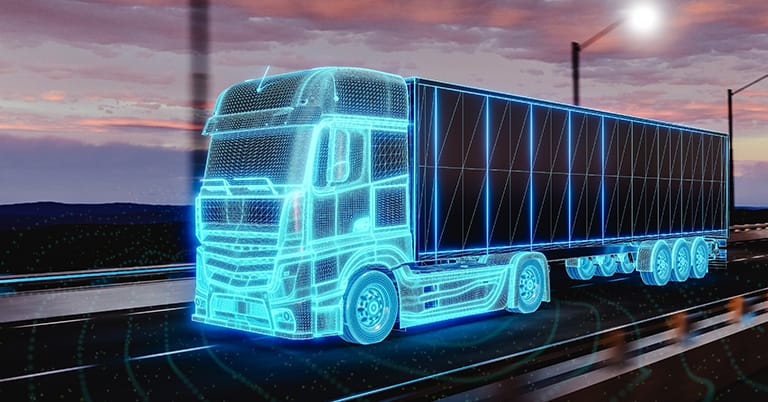If there’s one constant in the freight industry, it’s that the horizon keeps changing. New tech, new regulations, transport costs, and customer expectations are constantly redefining industry practices.
What key trends are shaping the future of the freight industry? And how can you equip yourself with the right shipping solutions to capitalise on emerging opportunities?
CONTENTS
- Ongoing growth of eCommerce and last-mile delivery
- Adoption of advanced technologies
- The push for sustainability & green logistics
- Strengthening supply chain resilience through diversification
- Regulatory changes & compliance
Ongoing growth of eCommerce and last-mile delivery
Hardly news, this one. But despite how long eCommerce has been on the rise, what’s notable is how much growth potential it still has.
The Australian eCommerce market has a projected compound annual growth rate (CAGR) of 9.36% between 2024-2029, putting industry revenue estimates at $58 billion by 2029 (Statista). This is only marginally behind the worldwide CAGR of 9.49%.
The other important factor in this is last-mile delivery (LMD). A worldwide study showed that LMD as a proportion of total shipping cost rose from 41% to 53% between 2018-2023 (Statista). By ‘total shipping cost’, that means getting products from their place of origin (ie. wherever they’re sourced or manufactured) through to the end user who buys them. Consider that for a moment. More than half the total cost of freight now comes from the shortest leg of its journey. If nothing else, this highlights the importance of optimising this segment.

Why does LMD take up such a large chunk of total costs? In short, because it’s the pointy end of the funnel which requires greater precision and specificity of freight services. For example, items produced in high volumes can be shipped en masse to a port, then moved together to a warehouse or depot. As they’re moved on to regional outlets or purchased by individual consumers, they’re forced to move in smaller volumes to more specific destinations. The specialisation of technology and handling requirements increases, and the process becomes more hands-on as it approaches the end user. In other words, rather than a large vessel moving items in bulk from a port to a depot, the last mile involves smaller vehicles taking a wide variety of items to several specific locations.
As a trend, this creates opportunities for logistics companies to further innovate around delivery solutions. The costs are high because the infrastructure, manpower, and availability of vehicles isn’t necessarily in place yet to service this part of the journey efficiently enough to match the extremely high consumer demand. Keeping up with consumer expectations is probably the biggest ongoing challenge in eCommerce.
What impact does eCommerce have on freight shipping?
Adoption of advanced technologies
Goalposts move pretty fast in tech-based industries. Logistics is no exception.
Five years ago, ‘advanced technology’ referred to things like real-time tracking and the emergence of freight management software (like us!) to consolidate all tasks in one place. Now, advanced technology has progressed to the application of AI and the prevalence of data and analytics. There’s greater visibility over processes and outcomes than ever before. Those who leverage this visibility are able to measure performance and quickly diagnose inefficiencies, using data to make informed business decisions.
In terms of growth, AI in transportation and logistics is expected to reach $10.3 billion by 2027 (Grand View Research, 2021). It’s a trending area of investment in Australia, as it is pretty much everywhere else. The potential positive impact of this is that it leads to greater efficiency and overall improved customer satisfaction – though the latter metric is always relative, of course. Investment in AI solutions is also likely to help reduce last mile costs.
The push for sustainability & green logistics
Another familiar topic. Sustainability and green shipping solutions continue to creep higher on the agenda. Although, with 2030 targets looming large, what started as a creep has become a clamour.
A lot of transport companies are talking about carbon calculators – to accurately measure the emissions of any given consignment. This includes fuel usage, distance travelled, weight of items, even the tyre pressure of delivery vehicles. All these data points contribute to the carbon calculation.
The next step, of course, is what to do with that number. Typically, the answer would be to offset those emissions, although opinions remain split on the efficacy of offset schemes. Then the discussion becomes rather than worrying about offsetting, why not move to zero emissions? Short answer: It’s hard. And not yet supported by the requisite infrastructure. That said, some businesses are making real headway with electric vehicle fleets, along with the infrastructure to charge them and replace batteries, even in remote areas.
The trend is that there’s increasing pressure to adopt environmentally sustainable practices within the logistics sector. This pressure is coming from a lot of places, but primarily from those paying for goods (ie. consumers).
There’s a strong possibility that there will be immediate, overwhelming demand for net zero freight. From being a ‘nice to have’, to suddenly everyone wanting it yesterday – potentially due to government legislation linked to the aforementioned 2030 targets.
For context, Australia is aiming to reduce its carbon emissions by 43% by 2030 (compared to 2005 levels). The transport sector is naturally a key focus in this. Demand for electric vehicles in logistics has been growing already with projections indicating that EVs could make up 30% of new vehicle sales in Australia by 2030.
The pressure and impact of this is obviously positive for the environment, even if it feels like playing catch up at this stage. On the flipside, resistance primarily comes from potentially negative commercial impacts in the short term. Namely, the cost of transitioning to greener solutions. The elephant in the room is that EV batteries are still predominantly being charged by coal power in the meantime anyway.
For what it’s worth, TGE (formerly Toll Logistics) now releases an annual sustainability review. They’re actively investing in new fleets to enhance fuel efficiency, including electric truck trials, among other sustainability initiatives. By no means are TGE the only ones making moves towards sustainability in logistics, but they’re certainly showing clear intent that reflects the broader trend.

From a cost perspective, fuel is the most volatile element in logistics. Fluctuations in the price of fuel heavily impact the costs at any given time, accounting for up to 20-25% of total freight cost. EVs certainly have the potential to mitigate these fluctuations. But the current transition period means savings aren’t clear cut. Green carriers would likely be charging for the higher capital expenditure of switching to an EV fleet or getting the requisite infrastructure up and running in the first place. Fuel surcharges wouldn’t be applicable, but that doesn’t necessarily mean that freight rates would come down – at least in the short term.
Carriers are starting to push green shipping solutions as a genuine selling point. While it’s on the verge of becoming more widely adopted, the extent to which it’s currently just a branding exercise versus something that actually moves the dial is still unclear. It’s a starting point at the very least. An indicator of innovation, as well as a reflection of the direction that technology and consumer demand is trending more broadly.
Strengthening supply chain resilience through diversification
The pandemic put a lot of people on the back foot, to put it mildly. Through a commercial lens, it revealed a lack of resilience within supply chains. This has led to a push to strengthen supply chain resilience through diversification and better risk management. All with the aim of mitigating disruptions.
It wasn’t just the direct challenges of lockdowns and stricter border controls that caught the freight industry out. These obstacles were compounded by the explosion in online shopping combined with a lack of drivers.
More and more Australian companies are planning to diversify their supply chains in the next 3 years to enhance their resilience. However, only 36% of Australian companies plan to allocate more than 5% of their budget to supply chain technology, lower than the international average of 48% – and even further below the US (GetApp – Supply Chain Strategy Survey 2024). For a large island nation, the opportunity – and necessity – is there to mitigate supply chain disruptions through diversification.
But what does it mean to diversify? Essentially, using a wider pool of carriers. A tool like MachShip makes that process so much easier. You’ve got better access to more transport providers for certain scenarios, plus streamlined selection, rather than having all your eggs in one basket.
It’s also prompted renewed government investment in local infrastructure projects to improve domestic supply chain capabilities and reduce any existing vulnerabilities.
Regulatory changes & compliance
Speaking of governments, the regulatory landscape is ever-evolving. The big focuses for the freight industry are around safety, emissions, and data privacy – all of which impact how logistics companies operate.
The National Freight and Supply Chain Strategy is an Australian government initiative. It covers regulatory reform, aimed at improving freight productivity and safety. New data privacy regulations are also expected to be implemented. The impact of these can be mixed, however. Any compliance or introduction of new compliance regulations can be costly and complex – at least initially – as people get their heads around them. On the whole, it provides the opportunity (and incentive) for better standards and practices within the industry.
The importance of compliance in freight shipping.
Need a hand navigating the future of freight management? Get in touch.

